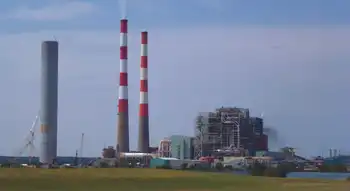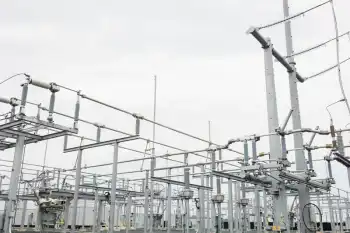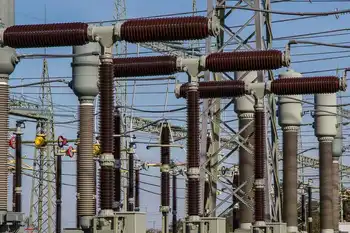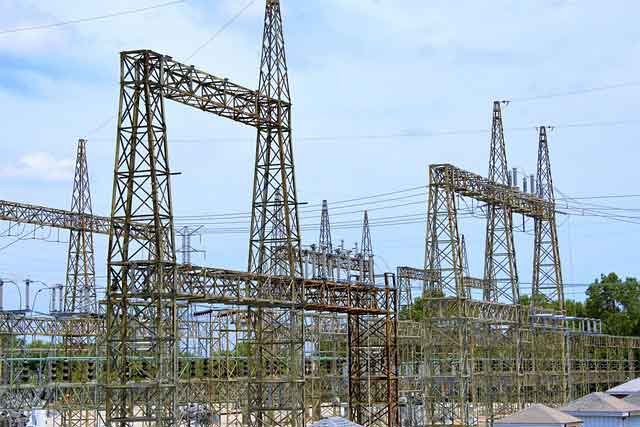Ashe has doubts about wind power
By Columbus Telegram
Electrical Testing & Commissioning of Power Systems
Our customized live online or in‑person group training can be delivered to your staff at your location.

- Live Online
- 12 hours Instructor-led
- Group Training Available
Asche addressed the Loup Power District Board of Directors telling them the most likely outcome of the industry-wide discussion would be to avoid jeopardizing the reliability of the energy grid and controlling rates for the customer.
"Wind for export and carbon emission regulations are certainly the two most important issues facing the power industry today," Asche said. "For the idea of wind for export to happen, there is going to have to be a fundamental policy change in public power. In 2008, the NPPD board adopted a 'slow go' approach that aims at 10 percent generation from renewables by 2020."
He said last year the statewide electric utility's generation resources were made up of just more than 1 percent from wind power, nearly 55 percent from coal, 32.8 percent from nuclear, 5 percent from gas and oil, 2.5 percent from hydro, and the remaining 6 percent from Western Area Power Association (WAPA) purchases.
Asche discussed challenges that face the public power industry from the current push toward wind for export.
"Policy considerations include public power's legal and statutory issues, location of wind farms, transmission planning, financials and cost recovery, and whether there even is an out-of-state market for wind energy," Asche said.
He said the current public power model is based on the concept that power generated is for Nebraska customers with any excess power then made available for sale to other markets. Under the "wind for export" model, power would be generated for the sole purpose of selling it outside the state.
"This is a great idea for economic development," Asche said. "But the challenges of reliability and transmission immediately come to mind when you may have contracts to meet and you're depending on an uncertain and intermittent generation source to generate power to fulfill those contracts."
Asche said the questions don't stop there. He told the directors that at this point there is no way to even estimate what the out-of-state market for wind energy may be. In addition he said the size and location of potential wind farms is going to be key to planning for transmission of the power generated.
Asche also identified the following as important:
• what are the environmental or land use issues that may affect where a wind farm can be?
• should wind farms be concentrated in one area to maximize ease of transmission or should they be dispersed across the state to enhance the potential economic benefits to a greater number of communities?
Asche said transmission planning is a real and challenging concern. He said he believes if national renewable goals are to be met, a national energy transmission plan will have to be designed and implemented.
"Finally, how is this going to be financed, and who will be ultimately responsible for the debt incurred in the development of this system," Asche asked. "Will Nebraska ratepayers be asked to guarantee the debt, or will capital be available to private developers?
"I think the federal government is going to have to be involved in providing government financing if the renewable energy goals are to be met in a similar way that the government was responsible for financing the nation's interstate highway system.
"There are a lot of issues here, and it's going to take time to work it all out. In spite of impatience on the part of some policymakers, this won't happen overnight — it can't happen that way."
The second part of Asche's presentation to the directors had to do with the potential effect carbon reduction legislation could have on Nebraska's utilities if it is passed.
"One of President Obama's campaign goals was for the reduction of carbon emissions to 1990 levels by 2020 and for a reduction in carbon emissions to be 80 percent below 1990 levels by 2050," Asche said.
Asche said today, 60 percent of NPPD's total generation resources come from carbon emitting resources. He told the directors that the utility's emissions in 2008 were about 10.6 million metric tons. To reduce that to 1990 levels, an approximate 40 percent reduction, would require bringing the levels down to 6.3 million metric tons and by 2050 to just 1.3 million metric tons to reach the 80 percent below 1990 levels.
He said current discussions most often do not acknowledge the probability of increases in the energy load or use of consumers. He said the approximate 40 percent increase from 1990 levels of carbon emissions to the current levels is consistent with energy load growth in the same time period.
Asche said before "wind for export" can be a viable option for economic development, wind and other renewables or increased nuclear power would first have to replace the reduction in carbon based generation sources.
"How do we get to 1990 levels by 2020? The only way would be to reduce NPPD's coal fired generation, reduce non-firm energy sales (sales to out-state customers), significantly increase wind generation and customers' energy efficiency practices and increase the energy output of the nuclear generation plant," Asche said.
Asche said the utility would have to increase wind generation to 20 percent of the generation resources by 2020 but that wind is an intermittent and essentially unreliable power generation source.
"Integrating wind power into the generation resource mix presents huge challenges to reliability," Asche said. "We may be able to meet the 2020 carbon emission reduction goals set by the president, but not without huge challenges to overcome.
"In the long term to meet the 2050 goals there will have to be more nuclear power or clean coal technologies in the mix and for that to work there would have to be virtually no opposition to building new nuclear plants."
Asche said a 20 to 30 percent increase in the cost of energy to the rate payers might be on the low end of costs to meet the possible outcomes of the legislation being proposed. He said when you add in the potential for additional carbon reduction taxes customers could see their rates double or triple.
"It's all very speculative at this time," Asche said. "But I believe these mandates will have huge impacts on low and moderate income families, and it could very well make us non competitive in the rest of the world."











